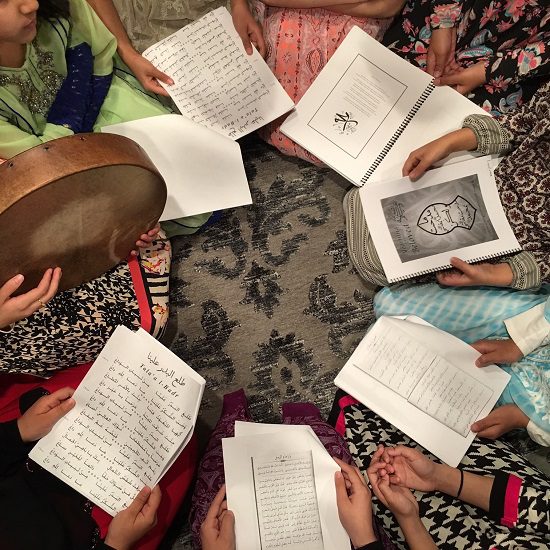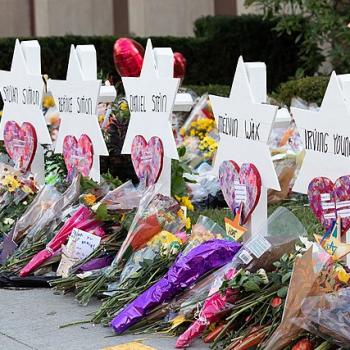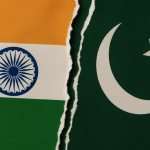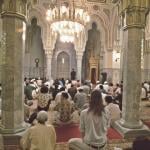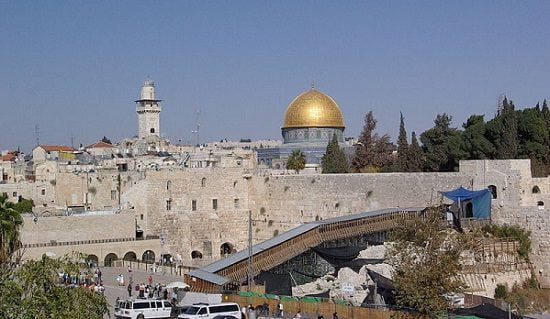
Editorial Note: This two-part article by Dr. Hatem Bazian was to be the last post in a series Altmuslim ran on Muslim Leadership Initiative (MLI) in January, which included this article by Samar Kaukab, this article by MLI participant Maggi Siddiqui, this article by Deanna Othman and this article by Shalom Hartman Institute (SHI) President Rabbi Donniel Hartman. Dr. Bazian, for a number of reasons, was unable to submit his piece in January and now has written the article for Altmuslim ahead of the third cohort’s trip to Jerusalem. Part one explores South Africa’s anti-apartheid and Latin America’s solidarity movements in comparison to the MLI program.
By Dr. Hatem Bazian
I am writing this article a few months removed from the heated debates on Altmuslim and other media outlets about the Shalom Hartman-sponsored Muslim Leadership Initiative — all-expenses paid trips to Israel for mainly American Muslim leaders to learn about the roots of Zionism. But, the issue are as relevant today as they were then. And now with the third cohort readying to leave this summer, the debate on the subject has only started.
I am approaching the subject first through South Africa’s anti-apartheid and Latin American solidarity movements lens, then I’ll engage in a discussion about the problematic nature of Shalom Hartman Institue’s MLI. The debate on the MLI program and my disagreement with it is fundamentally political in nature and not theological, even though participants entered into the program based on their Muslim identity.
This fact, then, conflates the political with the religious. I am not interested in the religious part of the debate and find the introduction into the conversation of Adab (spiritual courtesy), a complex term that governs relations between Muslims, as a tactic used to mute or alter critical responses to the program.
South Africa Anti-Apartheid
In the early 1980s, President Ronald Reagan’s administration and the South African government created a “Constructive Engagement” foreign policy initiative in response to the widespread anti-apartheid movement on college campuses. Constructive Engagement was developed by Chester Crocker, the assistant secretary of state at the time.
The policy was intended to address the growing domestic and international demands for action on a most visible and atrocious human rights crisis, following the 1977 United Nations Security Council Resolution 418, which imposed a mandatory arms embargo on South Africa.
At the time, South Africa was a critical U.S. ally in the fight against the Soviet Union and provided military support, intelligence information and troops to counter “communist” insurgencies in Southern Africa, including full-fledged wars in Mozambique, Namibia and Angola.
The machinery of Constructive Engagement included visits by civil society leaders, academics, music groups and corporate investments in South Africa’s black-owned businesses. Certainly, the policy was a reversal of the Carter administration’s approach to South Africa, which focused on human rights and constant criticism, if not isolation, in the hope of bringing an end to apartheid. Crocker’s policy was based on trusting the South African government and expressing empathy with white fears and security in approaching the subject of change in the country.
Through confidence-building measures, “improving black lives” in the country and gradual change over time, the policy posited that apartheid would come to an end. The policy was gradual, focusing on U.S. regional interests and opposing immediate enfranchisement for blacks by standing with whites against the African National Congress’ demand for one man, one vote and a truly democratic South Africa.
In addition, the strategy included concerted de-legitimizing efforts directed at anti-apartheid activists in the U.S. and Western Europe with the direct involvement of South Africa’s intelligence, Israeli Mossad and England’s MI6.
In addition, the Anti-Defamation League in the San Francisco Bay Area deployed an undercover agent to collect information on Arab, Muslim, Palestinian, South African and Irish activists and organizers, and then exchanged the data with both the British and South African intelligence services to help identify anti-apartheid organizers and Irish struggle supporters. The ADL began in earnest to target progressive and leftist groups by labeling as anti-Semitic any criticism of Israel’s relations with South Africa.
Critically, the de-legitimizing efforts included discounting and belittling the impacts of the boycott movement, while asserting that it only hurts the black working class South Africans who badly needed jobs and economic empowerment. Crocker, before coming to the State Department, was an academic who served as director of African studies at the Center for Strategic and International Studies at Georgetown University. He was also associate professor of international relations at the Georgetown School of Foreign Service.
Crocker wrote a report titled, “South Africa: Strategy for Change,” which contained the main lines for the Constructive Engagement policy. At the time, Crocker personally opposed racial discrimination and offered testimony to this effect. However, Constructive Engagement was centered on appeasing and working with the South African government and being sensitive to white fears and security concerns while constantly refusing to meet legitimate black South African leaders involved in the struggle and who were opposed to the apartheid regime.
The South African government had handpicked black African leaders to meet and interact with whenever an occasion called for it. Ironically, they were brought from the Independent Homelands, which were created under the apartheid system itself. Among the key figures serving in this role was Chief Mangosuthu G. Buthelezi who, with the support of the South African government, set-up the National Cultural Liberation movement (Zulu Inkatha ye Nkululeke ye Sizwe) as a counter to the ANC.
He also often invited the U.S. to express opposition to the anti-apartheid movement. In this context, the South African and U.S. governments had a black face, an actual Zulu chief to imply local support for the existing policy (Buthelezi was already on South Africa’s government payroll before Constructive Engagement and was a very important instrument for its implementation).
With a domestic black homeland leader supporting the counter ANC strategy, which was centered on the boycott movement, the South African government managed for a while to make inroads and obfuscate the issue among un-organized and un-affiliated conservative African American business leaders and among church leaders. The campaign to counter the successful efforts included bringing black and white South African speakers to tour and talk about the “reality” on the ground, because the naïve liberal campus and grassroots activists were unable to comprehend the complexities involved.
Essentially, the activists in the movement were strategically constructed as “infantile” young kids who didn’t understand how the adult “real” world of policy works. It was also said that an insider approach was the only way to bring change because those promoting the boycott movement on campuses did not understand the full context of the situation or how Washington operated to be relevant and gain access or success.
Shalom Hartman’s Constructive Engagement Project
Fast-forward to current boycott, divestment and sanctions efforts directed at Israel; the Shalom Hartman MLI program carries within it the same strategies and tactics that were employed against the South African apartheid boycott movement. The current strategies pursued by Shalom Hartman are a mirror image of the Constructive Engagement approach with minor modification.
At the heart of the MLI strategy is Zionism and Israel’s narrative, which relegates the Palestinian narrative to the periphery or worse, blames Palestinians for their own dispossession. During the South African anti-apartheid campaign, we always insisted that the black South African narrative led by the ANC was central to the struggle against apartheid. As such, all decisions and policies impacting their struggle was to be deferred to them directly.
As an anti-apartheid activist in the 1980s, executive board member of the United States Student Association and chairman of the National Student of Color Coalition, and as someone who wrote the national campus platform, which was voted on by university student body presidents and which adopted the national boycott, I was aware of Pretoria government invitations to student leaders to visit South Africa.
Each time, I would consult with South African activists in New York to seek their opinion and I would give their perspective primacy over any other considerations.
Yes, all-expenses-paid trips were offered and some short-sighted conservative campus leaders visited South Africa and came back espousing the Constructive Engagement philosophy. Interestingly enough, the pro-Israel Hillel on campus, ADL, AIPAC and JAC all supported Constructive Engagement and opposed divestment. Only in the early 1990s did they shift their position after apartheid was no longer sustainable and Mandela was released from prison.
Latin American Solidarity Movements
A similar circumstance faced activists in the Central American Solidarity Movement, which was successful in ending U.S. aid to the death squads in Latin America. A type of Constructive Engagement was offered by bringing the extreme right wing Alianza Republicana Nacionalista or ARENA party leaders to American campuses to educate the students, invite them to visit in efforts to block their successful activism.
Once again on many campuses, including San Francisco State University and UC Berkeley, Hillel hosted events for ARENA party leaders and urged students to embrace political figures who were behind the death squads in Latin America.
Also, it might surprise some that when then-Vice President George Bush asked and got Saudi Arabia to provide $25 million funding for the Contras in Latin America, we actually protested and opposed it. The fact that the funds came from Muslims did not change or influence our position nor did it cause silence, because funding the Contras wrong and contrary to Islamic ethics. In the Latin American Solidarity Movement we had Jews, Muslims, Christians and every other creed and political trend but all were united on the principle that justice is indivisible. Opposing Saudi Arabia policy at the time was right and just.
What is disturbing in Imam Abdullah Antepli’s article is that he once again conflates opposition to Israel with anti-Semitism by using his own experience to generalize about the Muslim world. While I am not in any position to cast doubt on Imam Antepli’s own anti-Semitism, I do take issue with the generalization he made in the article and the resulting conflation of opposition to Israeli policies with anti-Semitism.
Such a conflation is very destructive and harmful to defeating real anti-Semitism. It has far-reaching implications for Students for Justice in Palestine and Muslim Student Association activists on campuses as the massive de-legitimizing campaign is directed at them. It might be the case that the ADL or mainstream Zionist organization shared their data, which often conflates both in attempts to silence Palestine solidarity activism.
I am fully aware and follow the ADL’s work on anti-Semitism; however, since the organization abandoned its praiseworthy civil rights mission and acts as Israel’s and Zionism’s thought police, one has to discount its work when it comes to the issue of pro-Palestine activism. To be sure, some activists do harbor anti-Semitic sentiments, but they are in a small minority.
Come back tomorrow for part two, in which Dr. Bazian will discuss more about the Muslim Leadership Initiative, understanding Zionism and BDS and why MLI’s approach isn’t feasible.
Dr. Hatem Bazian Co-founder and Chairman of the Board, American Muslims for Palestine, Co-founder, faculty and member of the Board of Trustees Zaytuna College, Lecturer, Near Eastern and Asian American Studies, UC Berkeley, and Director of the Islamophobia Research and Documentation Project at Cal’s Center for Race and Gender.


